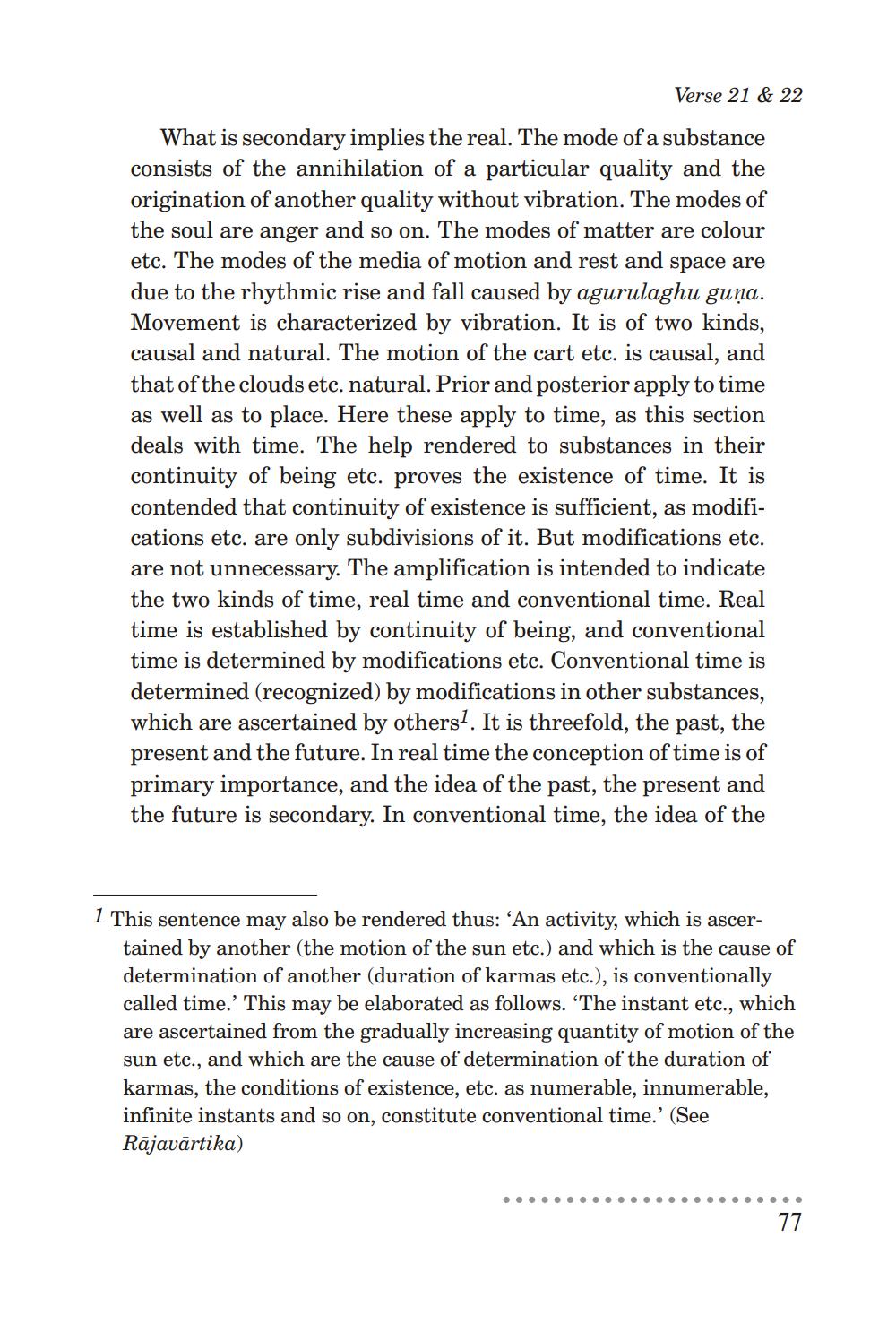________________
Verse 21 & 22
What is secondary implies the real. The mode of a substance consists of the annihilation of a particular quality and the origination of another quality without vibration. The modes of the soul are anger and so on. The modes of matter are colour etc. The modes of the media of motion and rest and space are due to the rhythmic rise and fall caused by agurulaghu guņa. Movement is characterized by vibration. It is of two kinds, causal and natural. The motion of the cart etc. is causal, and that of the clouds etc. natural. Prior and posterior apply to time as well as to place. Here these apply to time, as this section deals with time. The help rendered to substances in their continuity of being etc. proves the existence of time. It is contended that continuity of existence is sufficient, as modifications etc. are only subdivisions of it. But modifications etc. are not unnecessary. The amplification is intended to indicate the two kinds of time, real time and conventional time. Real time is established by continuity of being, and conventional time is determined by modifications etc. Conventional time is determined (recognized) by modifications in other substances, which are ascertained by others. It is threefold, the past, the present and the future. In real time the conception of time is of primary importance, and the idea of the past, the present and the future is secondary. In conventional time, the idea of the
1 This sentence may also be rendered thus: 'An activity, which is ascer
tained by another (the motion of the sun etc.) and which is the cause of determination of another (duration of karmas etc.), is conventionally called time. This may be elaborated as follows. 'The instant etc., which are ascertained from the gradually increasing quantity of motion of the sun etc., and which are the cause of determination of the duration of karmas, the conditions of existence, etc. as numerable, innumerable, infinite instants and so on, constitute conventional time.' (See Rājavārtika)




